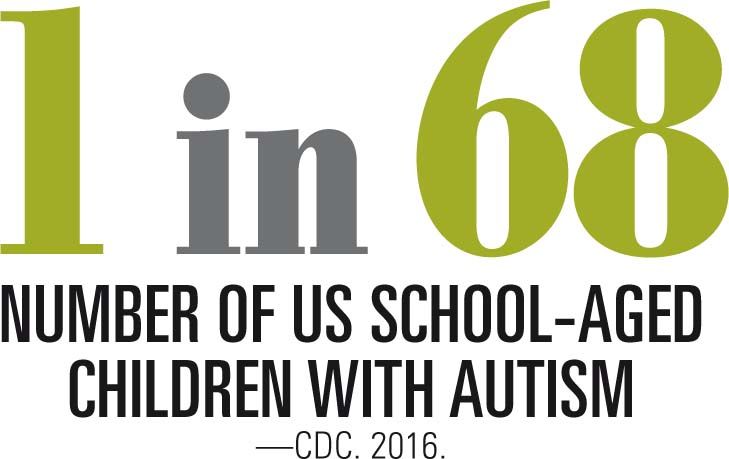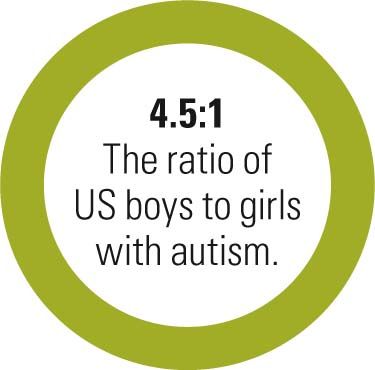What's autism, what's not
One in 68 children has an autism-spectrum disorder (ASD). When screening children, however, physicians must be aware that many other developmental disorders occur more commonly.
One in 68 children has an autism-spectrum disorder (ASD). When screening children, however, physicians must be aware that many other developmental disorders occur more commonly, Susan Hyman, MD, FAAP, told attendees of her session “It’s not always autism,” presented at the American Academy of Pediatrics 2016 National Conference and Exhibition.
The Modified Checklist for Autism in Toddlers (M-CHAT) is an excellent tool. Among children who screen positive on this test, 95% ultimately are diagnosed with some developmental disorder; about 45% will be diagnosed with autism.
In Hyman’s referral-based practice, a fairly large percentage of children sent for evaluation of autism walk away with other diagnoses. Very commonly, family members or caregivers are looking for a diagnosis to accurately describe the issues their child is having, and arrange for appropriate services.

In such situations, attention-deficit/hyperactivity disorder (ADHD) ranks among the most common nonautism disorders physicians see. Hyman noted that ADHD might look like autism because ADHD symptoms can include inattentiveness (generally, and to social language and cues), impulsiveness, apparently tangential speech, and behavioral dysregulation. These children may explode for no apparent reason, and have selective attention to sensory stimuli. All these behaviors may be seen in autism, but for different reasons. Children with ADHD have social awareness; their primary deficit is attention. How their symptoms differ from autism may not be apparent until one steps back and considers the reasons behind them.
More: Lost ASD diagnosis, now what?
When a child tests positive on a screen such as the M-CHAT, pediatricians must refer, not defer, Hyman said. A positive screen is not something to sit on. It means something is going on-the child needs developmental evaluation, through early intervention under the direction of a specialist, to consider the potential for an autism diagnosis. The primary care provider then will get feedback from these evaluations, and must provide the medical home for the patient.
Pediatricians are getting increasingly better at screening and identifying developmental disorders; their awareness for developmental differences is elevated. However, they need to do even better regarding timely referrals for evaluation. Often, there's a disconnect or delay in screening and evaluation, and many of these children are medically underserved to begin with. Early treatment has documented benefit. Outcome is improved by treatment that is early and intense, and that includes the family.
Susan Hyman, MD, FAAP, is professor of Pediatrics and division chief, Neurodevelopmental and Behavioral Pediatrics, Golisano Children's Hospital, University of Rochester, New York. She reports no relevant financial interests.
NEXT: Commentary
COMMENTARY
I love that Dr Hyman emphasized that many children who screen positive on the M-CHAT may have a disorder other than autism spectrum disorder (ASD). Getting an accurate diagnosis is essential because it can have a huge impact on the appropriate treatment plan. In addition to ADHD, we also see kids who have apraxia, selective mutism, anxiety disorders, genetic disorders, behavior problems, and other conditions. The treatment approach may differ dramatically in these cases.

It's vital to emphasize to primary care providers that young children with developmental delays should be referred for early intervention services even before the diagnostic evaluation has been completed. Waitlists for developmental evaluations are long across the country, and families may wait more than a year in some places. Children who screen positive for ASD risk or who have other developmental delays often can get treatment through their state’s early intervention program or educational system prior to receiving a formal diagnosis.
Next: When to look harder at jaundice
It's also important that pediatricians know that there is compelling research to suggest that parents are extremely accurate when reporting developmental concerns about their child. I still see older children with ASD whose parents have been expressing concern for years and have been reassured by their pediatrician that nothing is wrong. Unfortunately, the average age of ASD diagnosis in this country is still over 4 years. We can drive down this number by listening and acting when parents report that something is not right.
-Laura Carpenter, PhD, is professor of pediatrics, Medical University of South Carolina, Charleston.She has received research funding from Autism Speaks, the US Department of Defense, and Cognoa.
Mr Jesitus is a medical writer based in Colorado. He has nothing to disclose in regard to affiliations with or financial interests in any organizations that may have an interest in any part of this article.
New research finds significant challenges for children with disabilities in foster care
September 27th 2024A study presented at the American Academy of Pediatrics 2024 National Conference finds children with disabilities in foster care face lower permanency rates and higher mortality risks, calling for specialized support and interventions.